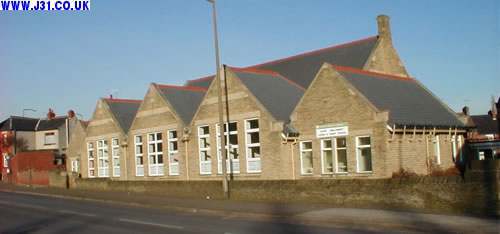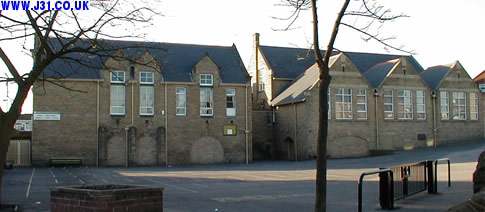In October 2000 a former inhabitant of Aston/Swallownest from 1936-1955 emailed me the following reminiscences and memories of the villages during the first half of the 20th century.


The School which I experienced was very different from the one today, although from my last visit a few years ago, the buildings themselves have changed little. The School was really two-in-one, the Infant and Junior Department occupying the building nearer to School Street, the other building housing the Senior School. There were two headteachers; the Infants and Juniors were presided over by Miss Lucas who ruled, if not with a rod of iron, with the odd strap if you stepped too far out of line. The Head of the Senior School was Mr W ("Bill") Berry, another strict disciplinarian but, during the above period, he retired and was replaced by Mr W A V Hoskins who, if I remember correctly, had political aspirations.
Entry and progress rules were also rather different, so I’m told. There appeared to be no fixed entry dates to the Reception Class (presumably if a child had not started by a certain age, the Attendance Officer or "School Bobby" called to see why not) and progress through the classes was also on a flexible basis. When it was decided that you’d learnt all that there was to learn in one class, you moved on to the next.
So much for the School but what about me ? My sister and brother (seventeen and ten years older than me respectively) had done well at school, both going on to Woodhouse Grammar School. My parents were somewhat worried therefore when, in response to the question still beloved of adults "When are you starting school, then ?", my stock answer was "Never-not-at-all-I’ve-left". However, again so I’m told, one afternoon I announced that I was going to start school the next day; my parents took this with a pinch of salt but, surprise, surprise, next day I demanded to be taken and so I was.
However, a slight problem arose when I arrived. In the Reception Classroom (the one end-on to Rotherham Road), I saw some folding canvas beds and wanted to know what they were for. On being told that young children had a nap in the afternoon, I decided that I didn’t want to stay after all but was told that, if I showed that I wasn’t tired, I needn’t take a rest.
The teacher in charge was Miss Bowie who, I think came from Beighton. She was just the sort of person to initiate young children into the life of the School - a much gentler individual than the above mentioned Miss Lucas.
I can’t remember all that much about what we did but I can recall modelling with clay (presumably plasticine was in short supply during the war), playing in a percussion band and dancing around a maypole. In between, I assume that we were taught to read and write and "do sums" but can’t recall what our reading books were. Not "Janet and John" for sure - maybe given the period, "Eva and Adolph".
Across one end of the classroom were some mysterious locked cupboards; it was a long time before I found out that this was the public library. One night a week, they were opened up and books were issued on behalf of the West Riding County Library by local part-timers. One of these was my Aunt Maud who doubled as a school cleaner; my uncle, Gerald Rayner, was the caretaker and they lived nearby at the bottom of School Street.
I was soon moved to the next class and found myself sitting near the back with one Edward Atkinson - are you still out there, Edward ? Here, we got on to more exotic subjects in addition to the three R’s - nature study was one of them I remember.
This being wartime, we had to carry our gas masks to school and, from time to time, had practice evacuations into the air-raid shelters which were under the corner of the playground near the junction of High Street and School Street. Occasionally our gas masks were tested down there - a small amount of tear gas was liberated and anyone who cried needed his/her gas mask fixed (assuming of course that they were not tears of fright). I can’t remember if we ever had to go into the shelters for real because of an attack alert - unlikely I suppose since after 1940, most of the raids on Sheffield, Manchester, Liverpool etc. which passed overhead were at night.
It must have been at the age of seven or eight that I was moved on into the Senior Department and met a new range of teachers including, for the first time, male ones. One teacher,
Mrs Radford, introduced us to handwork involving steel rulers, cutting knives, cardboard and glue. If fingers got too sticky, her advice was to rub them into your hair - maybe this was also good for nit control and saved the nit nurse a job on her next visit ! Then there was Mrs Twydale - all I remember was that she was a marksman at shoe throwing - one from a collection behind her desk was sure to come winging your way if rules were broken. Another name I remember was Mrs Horner who, with her husband, had done missionary work abroad. Whether Swallownest was seen as a bigger challenge than darkest Africa, I didn’t find out.
There were three male teachers during my time there. Mr Crossland, too old for military service, was there for as long as I can remember. He took the oldest class (13+) in a space at the end of the Hall. He was in charge of the School gardens - one at Aughton where he took the oldest boys and one opposite School, just above the Miners’Welfare grounds where younger children did some tilling of the soil to help the "Dig for Victory" campaign. I can still vividly remember a momentous day in May 1945 when we were in the upper playground for afternnon break and heard, before we even saw, the returning gardening class. They had heard on their way back to School that the war in Europe was finally over and that we’d be having a holiday - which got the loudest cheer is difficult to say.
After the war ended, two other men appeared; one of these was Mr Bloor who still seemed to think he was on the parade ground. He often was seen with a short cane (the type carried by Sergeant Majors) and he was not averse to using it.
The other one was my cousin, Howard Layne, who returned after RAF service and this gave me some worries since he became our class teacher. If I got good marks for something, I was likely to be called "teacher’s pet", if I didn’t, Howard was likely to make some comments to my parents when they next met.Talk about ‘Catch 22’ !.
It was during that year that the West Riding brought in a scheme which allowed underage pupils (10 years) to take the equivalent of the eleven plus. Two of us were entered and went on to Woodhouse Grammar School in 1946, along with other fellow pupils. That was a very different experience. But I shall always be grateful for the excellent introduction to the World of Education which I received at Swallownest Council School. It would be interesting to hear from anyone who shared those school years with me and who might amplify and/or correct my memories of over fifty years ago.
Jon Layne jon.layne@ntlworld.com
12 October 2000
Copyright Jon Layne 1999,2000, reproduced with permission